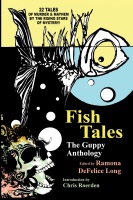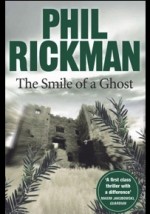Trappist monk and writer Thomas Merton wrote many poems over the too-brief span of his fifty-three years, but my favorites are those dealing with nature. A few months ago, I blogged about “Night Flowering Cactus,” which I think is his masterpiece in the genre, and today, in honor of Earth Day, I’d like to look at a more spring-like gem, “O Sweet Irrational Worship.” Here is the beginning:
“Wind and a bobwhite
And the afternoon sun.
By ceasing to question the sun
I have become light,
Bird and wind.
My leaves sing.
I am earth, earth
All these lighted things
Grow from my heart.”
The entire poem can be found here.
The poem begins very simply, reflecting perhaps Merton’s interest in the radical stripping away of the extraneous, which he found in Zen Buddhism as well as in certain mystical paths of Western Christianity such as that of Saint John of the Cross (known for his meditations on “the dark night of the soul”).
In the line “By ceasing to question the sun,” I believe Merton is describing a path to mystical contemplation in which we let go of the rational, analytical part of our mind and simply experience the present: the sun, the wind, the bobwhite (not a generic “bird” but a specific creature). If you go still long enough and just let yourself experience these elements of nature, you may perhaps enter into a mystical union with them as Merton did in the encounter he depicts in this poem: becoming the light, the bird, the wind.
In the next line, Merton moves beyond this to a more universal identification with the natural world. His “leaves sing” as if he were a tree, and then he moves on to a yet greater epiphany: “I am earth, earth. All these lighted things grow from my heart.” By identifying so completely with the natural world to the extent that he experiences a kind of mystical oneness with it, Merton then perceives the interconnectedness of it all, of all the “lighted” things: things that share in the universal condition of being lit by the sun, things that also share in the universal light of the love and creativity of God.
And then more than this, a connection that shares not merely the same experiences, but one that has gone beyond this to take on a sense of responsibility, of a deep inward tie so that for a mystical moment, all creation seems to grow from his heart. And in fact, perhaps it does, just as in Roman Catholic theology the blood and body of Christ transmute into the wine and bread that Christians take in the mystery of Eucharist.
I fancy that more conservative Christians would frown on the poem as veering towards pantheism, nature-worship, but that is to ignore the deep, worshipful response that nature inspires in so many people, across so many eons and cultures. As I mentioned last week, it was C.S. Lewis, certainly no “liberal” (and certainly no “conservative,” either, but a “mere” Christian), who wrote of the deep joy that nature inspired in him, and of how it pointed the way to his certainty that a transcendent element exists.
Reverence for the earth is urgently needed, now more than ever, when we humans are on the verge of destroying the beautiful world that people of religion believe was made by God, not merely, I would argue, for its utilitarian value, but for its beauty, its joy, and for the opportunity to share fellowship with other living creatures that are so different from ourselves such as Merton’s bobwhite and pine tree.
After celebrating this tree, “a tall, spare pine / [that] Stands like the initial of my first / Name when I had one,” and two ecstatic stanzas that are each followed by the “I am earth, earth” refrain, the poem concludes as simply as it began:
“Out of my grass heart
Rises the bobwhite.
Out of my nameless weeds,
His foolish worship.”
In this final image, the bobwhite, Merton, and the earth itself are inextricably linked, so that Merton’s heart becomes the earth, an emptying of a self that now has no name. The poet’s heart is the humble, lowly matter of grass and weeds, the setting and habitat for the bobwhite, who is now linked with Merton the monk in an act of thanksgiving for life, the act of “foolish” worship, worship of the One in whom both poet and bird live, move, and have their being.


























